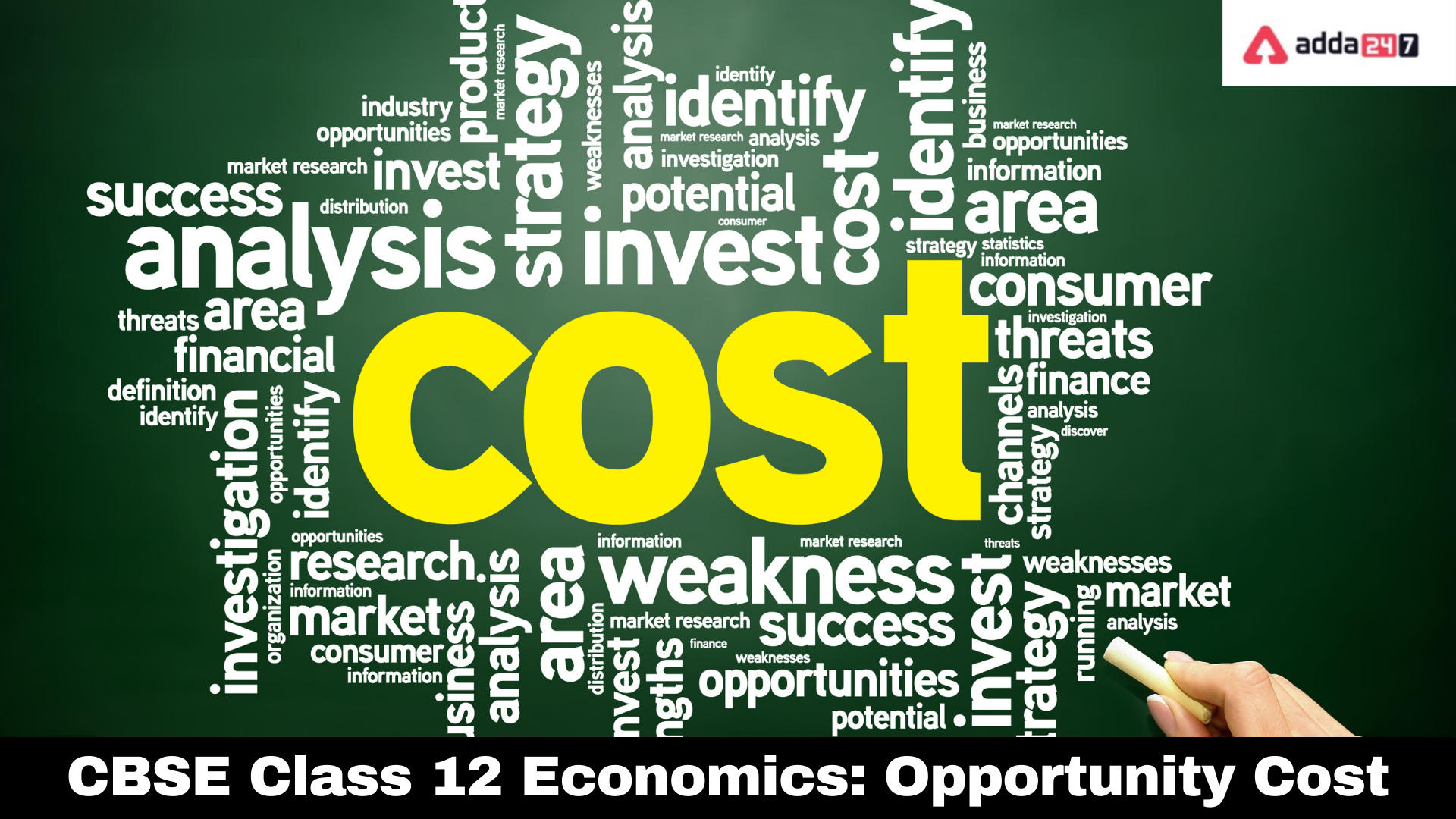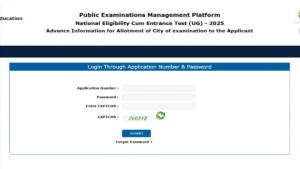Table of Contents
Opportunity cost- Introduction Class 12 Economics
Adam Smith, an economist from the 18th century, was the first to present it. There are three things you need to consider when calculating opportunity cost: Your level of certainty about both possibilities, the worth of the option you’re forgoing, and the chance of realizing your goal. Opportunity cost is significant because it motivates us to consider the future while making decisions, such as what course of action to take in a business. It can also be used to decide whether something is worthwhile to pursue based on the prospective rewards and what we might have to give up in exchange.
What is Opportunity Cost?
Opportunity cost is frequently referred to as the second-best option. The loss of gain that would have been realized if a different option had been chosen is sometimes referred to as the alternative cost. The loss of benefit as a result of a change in choice is another way to explain it.
Opportunity cost is a term used in economics that derives from the reasonable premise that resources are scarce. The number of production options will be constrained by the limited resources. Due to the limited number of production options, it is necessary to set aside the creation of alternative combinations of commodities in order to produce a specific set of goods. This is known as an opportunity cost.
Promoters and business analysts frequently use the idea of opportunity cost to conduct feasibility studies and determine what kinds of policy decisions should be made.
Ace your preparation level with CLAT 2023 preparation batch.
Opportunity Cost of Decisions
Every opportunity cost is the result of a bad choice. The opportunity cost will decrease the better the choice is. Every daily task carries an opportunity cost. The opportunity cost of sleeping more could be the coursework you didn’t complete. Although you would rather sleep, doing your schoolwork makes you more productive and might even help you get better grades.
The opportunity cost of actions in economics typically refers to the opportunity cost resulting from the firm’s production-related decisions. The lack of resources leads to this decision about the type of production. For instance, a farmer tends to various crops in a fixed piece of land.
If the farmer plants rice at a specific time, she will run out of land to grow wheat because she has already used it to grow rice. The farmer’s opportunity cost is the extra profit she would have made from growing wheat instead of rice.
The farmer’s small plot of land and her choice to plant rice rather than wheat were the main causes of this opportunity cost. The farmer could have produced any amount of rice and wheat if she had access to an infinite amount of land and manpower. Additionally, she would have made more money than she does today if she had chosen to grow wheat rather than rice.
Get your CUET preparation done with Adda247 online classes new CUET 2023 batch.
Opportunity Cost Calculations
The additional return on an alternative that is accessible over and above the selected choice is known as opportunity cost.
Opportunity cost is calculated as Return from the best alternative minus Return from the previously chosen choice.
There are several uses for this opportunity cost calculation. The concept of opportunity cost is applicable in numerous other business settings, but it is most frequently applied in decisions regarding product planning. The formula is used to compute economic rent, which is the difference between the real return on factor services and their supply price, as well as to establish the prices paid for factor services.
Opportunity cost analysis is not just relevant for producers. The opportunity cost approach is another tool that consumers use to compare various consumption bundles.
Opportunity Costs Types
Opportunity costs can be broadly divided into two categories. Both explicit and implicit expenses apply. Explicit costs are precisely what their name implies: direct, recognisable costs. The clearly defined expenses are incurred and documented in the books of accounts. These specific expenses would need to be covered in cash or in-kind. For instance, the cost of repairing a malfunctioning piece of company equipment is clearly stated. The cost of the repair and installation work must be paid in cash, and the transaction is recorded as an expense in the books of accounts.
Implicit costs are indirect or invisible costs that cannot be directly or easily traced down. The implicit costs affect the firm as the loss of its owned resources. Payments are not usually made as there is no real cost. For example, if in a firm a piece of machinery breaks down as mentioned earlier, in addition to the cost of repairing which is an explicit cost there is also an implicit cost of loss in production. The production in that unit is stalled as the machinery is not working and, in the meantime, other valuable resources like human resources are being wasted.
Join the Adda247 Saksham batch by clicking on this link.
What is the Increasing Opportunity Cost?
The production possibility frontier, which illustrates the potential for producing various bundles of two items with a finite number of resources, frequently illustrates the idea of growing opportunity cost. The opportunity cost is represented by the slope of the Production Possibility Frontier, which is concave to the origin. The PPF illustrates how the potential cost of producing more of one good continuously rises since it is concave to the origin. The inefficiency of resources when used to produce many types of goods is typically used to explain the growing nature of opportunity cost.
Steel, for instance, can be used to create both utensils and weapons in a given economy. The opportunity cost keeps dropping as more steel is used to make weapons and less to make kitchenware. This is due to the set amount of other resources used in the manufacture of weapons, specifically the machinery, which gets less effective as more and more steel is fed into it.
Opportunity Cost is Important
- 1. It represents the price of alternatives, such as forgoing immediate financial gains.
- 2. It is employed to assess an opportunity’s potential
- 3. It can also assist you in deciding whether or not a specific line of action is worthwhile.
- 4. It can aid in better decision-making.
- 5. Opportunity costs and benefits are evaluated.
- 6. It motivates you to consider the future.
Some Tips to Study Opportunity Cost
1) Know the Basics- Before starting studying the concept, it is important to have a clear understanding of what it is all about and be familiar with the common terminologies. Which will help you focus on the concept itself.
2) Learn the Rules- There are some rules that you need to follow in order to get accurate results and avoid making mistakes when calculating opportunity costs. You should always use real numbers instead of percentages or fractions for simplifying the calculation process without confusion. When choosing your timing, consider how long an activity takes and when its benefits begin. Avoid cramming – Write down concepts clearly before moving over them so that there won’t be any difficulty while practicing later on during exam time!
3) You need to make sure that the correct time period is used. When choosing your timing for opportunity cost calculations, it’s important to consider how long an activity takes and when its benefits begin.
4) You should always use real numbers instead of percentages or fractions in order to simplify the calculation and avoid confusion.
5) Avoid Cramming- When it comes to studying, especially for something like opportunity cost where there are a number of complex terms. It is best to make sure that you write them down and understand the concept fully before moving on.
6) Practice Makes Perfect- It is important to practice the calculation because there are a number of different ways to calculate opportunity cost. There are online calculators that you can use or even practice problems to help you better understand the concept.
Opportunity Cost- Applied in Various Ways
Opportunity cost is a fundamental economic idea that also applies to enterprises. To make better business decisions, it’s critical to study and comprehend the notion. Studying and practicing will help you gain a thorough understanding of how it operates, which is the ideal method to go about doing this.
It’s crucial to take opportunity cost into account while making financial decisions. This is the sum of money needed to purchase something else. Opportunity cost is a fundamental economic idea that also applies to enterprises. In essence, it’s what you forego while choosing a different path of action.
Found this article helpful?
Reach us by means of visit or call our senior instructor at +91-9625869989 to figure out additional information about the various choices and streams that are open.
We would really see the value in it on the off chance that you could grant a portion of your insight. By utilizing our application, tests, and YouTube class help, you can unwind any vulnerability assuming that you’re centered around getting the best grades Adda247
Opportunity Cost, CBSE Class 12 Economics- FAQs
Question 1 What is opportunity cost class 12th economics?
Ans.Opportunity cost is a concept in Economics that is defined as those values or benefits that are lost by a business, business owners or organizations when they choose one option or an alternative option over another option, in the course of making business decisions.
Question 2 How do you calculate opportunity?
Ans. What you sacrifice / What you gain = opportunity costs
Question 3 Can opportunity cost negatively?
Ans. Opportunity cost can be positive or negative. When it’s negative, you’re potentially losing more than you’re gaining. When it’s positive, you’re foregoing a negative return for a positive return, so it’s a profitable move.



 NEET City Intimation Slip 2025 Out at ne...
NEET City Intimation Slip 2025 Out at ne...
 NEET Passing Marks Out of 720, Check NEE...
NEET Passing Marks Out of 720, Check NEE...
 NEET Total Marks- Check NEET Marks Distr...
NEET Total Marks- Check NEET Marks Distr...








